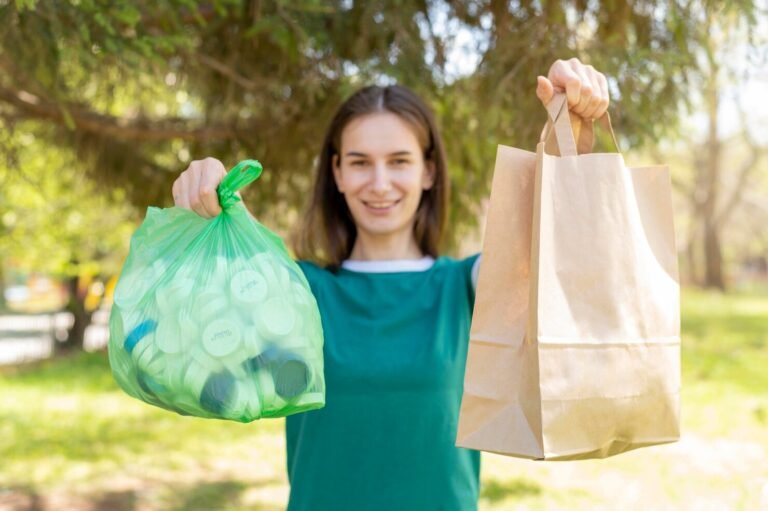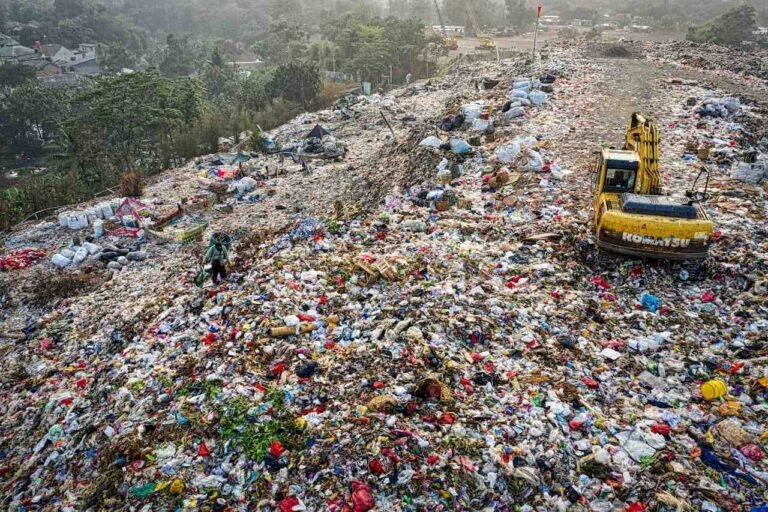Plastic Pollution Among Top 10 Global Environmental Threats
Plastic pollution has emerged as one of the top ten environmental dangers facing our world today, particularly for biodiversity loss and ecosystem collapse. According to the World Economic Forum’s Global Risks Report, pollution now ranks among the top ten global environmental threats, and biodiversity loss is the second most severe long‑term risk facing humanity. Unlike visible climate events, plastic pollution is a quiet, pervasive disruptor: plastics infiltrate land, rivers, oceans—they break habitats, introduce toxins, and interrupt food chains.
A new analysis from Stockholm University shows plastic pollution doesn’t just exist in the environment—it exacerbates threats across the planetary boundaries, including climate change, ocean acidification, freshwater depletion, land degradation, and biodiversity loss. It was revealed that over 500 million tonnes of plastics are produced every year, yet less than 10% is recycled—most of it enters ecosystems or landfills, releasing greenhouse gases and toxic additives across its life cycle.
From Mount Everest to the Mariana Trench, microplastics are now ubiquitous; from soil to sea, even remote wilderness hosts particles that disrupt microorganisms, pollinators, fish, and eventually humans. In agricultural landscapes, recent studies reveal that nanoplastics and microplastics (NMP) reduce pollination, disturb biocontrol agents, and may threaten global food security. In Antarctic soils, researchers even isolated bacteria capable of feeding on polypropylene microplastics, highlighting both the scale of contamination and possible future remediation paths.

Personal Stories, Experts, and Local Responses
According to a report by Reuters, on the Greek island of Alonissos, volunteer divers recount hauling up tires, bottles, and fishing nets from the seabed—trash that blankets parts of Europe’s largest marine park. The project, supported by the EU, is critical for protecting monk seals, dolphins, sea turtles, and over 300 fish species. Locals hope this community cleanup can serve as a model for preserving marine ecosystems elsewhere. One diver described how a “ghost net” strangled coral branches for years, visible only after removal.
Meanwhile, scientists across 19 countries, recruited by the Marine Stewardship Council, warn that plastic has now become the biggest threat to marine ecosystems, ahead of climate change and overfishing. They reported that about 5% of marine catch contains plastic debris, which threatens both ecosystem health and coastal livelihoods. Sunil Mohamed, chair of India’s Sustainable Seafood Network, stated: “It is alarming that around 5% of marine catch from coastal waters contains plastic waste… we need stricter measures.” But he also expressed optimism: good fisheries management and public‐private cooperation could help restore ecosystems.
At international policy tables, environmental scientists like Prof. Bethanie Carney Almroth and Patricia Villarrubia‑Gómez have highlighted persistent corporate interference. A Guardian investigation reveals that during UN plastic treaty talks held in South Korea and Ottawa, industry lobbyists significantly outnumbered scientists and delegates, working to block efforts to impose production caps. Experts reported harassment and surveillance tactics used against participants advocating for binding commitments. Yet they remain committed to science‐led action for effective policy.
From a personal perspective, farmers in India sharing their experiences with UNEP‐supported extended producer responsibility schemes recounted how training programs helped them pivot away from single‑use polyethene mulch and adopt biodegradable alternatives. UNEP’s outreach to over 30 countries in 2024 involved advising 12 nations on EPR policies, helping over 45,000 companies take responsibility for plastic packaging across its life cycle.
Evidence & Insights: Studies, Data and Health Impacts
A landmark paper published in late 2024 used the planetary boundaries framework to show that plastic pollution does more than pollute—it interferes with global ecological processes, intensifies climate forcing, acidifies oceans, undermines biodiversity, and degrades soils and freshwater use. Mismanaged plastic waste is projected to reach 121 million tonnes per year by 2050, doubling if production is not capped—alongside a 37% increase in greenhouse gas emissions associated with plastics.
Another peer‑reviewed study using data from 3 million births in coastal regions of 15 countries linked prenatal exposure to marine microplastics with an increased incidence of low birth weight. A doubling of exposure raised the hazard by 0.37 per 1,000 births, equivalent to over 205,000 low birth‑weight cases per year globally.
At the local ecosystem level, Mediterranean studies show that one in three fish sampled had ingested plastic fragments; over half the sea turtles examined carried plastic either internally or entangled externally. Ingestion leads to digestive blockages, chemical exposure, malnutrition, and death. Researchers conservatively estimate that more than 100,000 marine mammals die every year due to plastic ingestion or entanglement, and over 1 million sea creatures are affected annually.
An overview from IUCN reinforces that plastic waste is a major cause of biodiversity decline, significantly affecting terrestrial, freshwater, and marine ecosystems and contributing to climate stress globally.
From Knowledge to Action: What You Can Do Today
All the evidence—from global risk assessments, peer‑reviewed science, and real‑life experiences—leads to a clear imperative: to tackle plastic pollution across its full life cycle, starting from production to disposal.
First, support policies that cap plastic production and mandate recycling or reuse. Scientific analysis shows that only by limiting total output, improving waste infrastructure, and enforcing packaging taxes can we avoid a projected disaster by 2050.
Second, advocate for and support the global plastics treaty, currently being negotiated under UNEP. Civil society voices must exceed corporate lobbyists’ influence. The story from Geneva to South Korea shows how corporate interference threatens progress; yet over 90 countries still push for a legally binding agreement that includes production caps and lifecycle regulation.
Third, promote extended producer responsibility (EPR) schemes and circular design. In 2024, UNEP helped over 40 countries build EPR frameworks, engaging tens of thousands of companies in rethinking packaging and waste design.
Fourth, support local cleanup and restoration projects. The Alonissos divers’ success shows that community action matters—volunteers protecting monk seals, coral, and fish livelihoods can inspire models worldwide. Community efforts, from beach cleans to zero‑waste campaigns, increase awareness and drive policy.
Fifth, make personal changes: refuse single‑use plastics, choose reusable or compostable alternatives, support packaging bans, and pressure retailers. World Environment Day 2025’s #BeatPlasticPollution campaign highlights how small choices compound into global momentum.
Finally, educate and raise awareness. Scientists at the Marine Stewardship Council survey emphasise plastic’s impact on fisheries, biodiversity, and coastal communities. Awareness fuels policy and encourages sustainable choices—from reducing seafood with microplastic risk to demanding better monitoring and data transparency.

Interactive Case Study Table
| Region/Context | Real‑World Insight | Outcome or Action |
|---|---|---|
| Alonissos, Greece | Volunteer divers recovered ghost nets damaging marine life | Inspired expansion to other marine parks |
| Coastal India (EPR) | Farmer training on biodegradable mulch systems | Reduced plastic film use, improved soil health |
| Mediterranean Fisheries | Surveys: ~1/3 fish, >50% turtles with plastic ingestion | Raised public awareness; supported packaging bans |
| Global Health Study | 3 million births – prenatal microplastic exposure linked low birth weight | Urged prenatal exposure monitoring and emission controls |
| Global Plastic Treaty | UN talks facing heavy corporate lobbying | Mobilized civil society to demand binding treaty |
Conclusion: Why This Matters
Plastic pollution ranks among the top ten global environmental threats not by accident but by impact: it undermines planetary systems, threatens biodiversity, affects food security and human health, and hobbles climate goals. Real research—from Antarctic bacteria breaking down microplastics to global studies linking plastics to low birth weight—reveals how deeply plastic has embedded into Earth’s systems.
But knowledge also brings solutions. From binding treaties, production caps, EPR policies, circular design, and community action, to personal choices, change is possible. Biodiversity frameworks like the Kunming‑Montreal Global Biodiversity Framework call explicitly for pollution reduction and financing to address plastics as part of Goal 7 and Goal 19.
Action Steps You Can Take Now
- Engage with campaigns calling for the UN plastics treaty to include strict production caps and lifecycle coverage.
- Support policies like EPR, plastic taxes, or reusable packaging mandates in your country or city.
- Join or organise community clean‑ups, supporting marine and land conservation projects.
- Reduce your personal plastic footprint: refuse, reuse, recycle, rethink each purchase.
- Share this knowledge with your networks—plastic pollution is not someone else’s problem, it’s a global crisis needing your voice.
By connecting real studies, local stories, expert insights, and planetary evidence, we see that plastic pollution ranks among the greatest threats to biodiversity—and that collective action can tilt the balance back. It’s urgent, but within reach.







